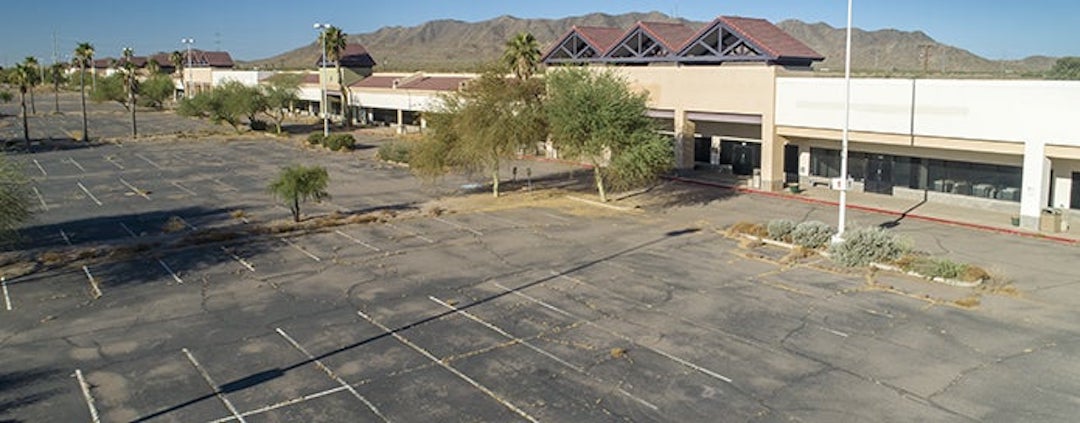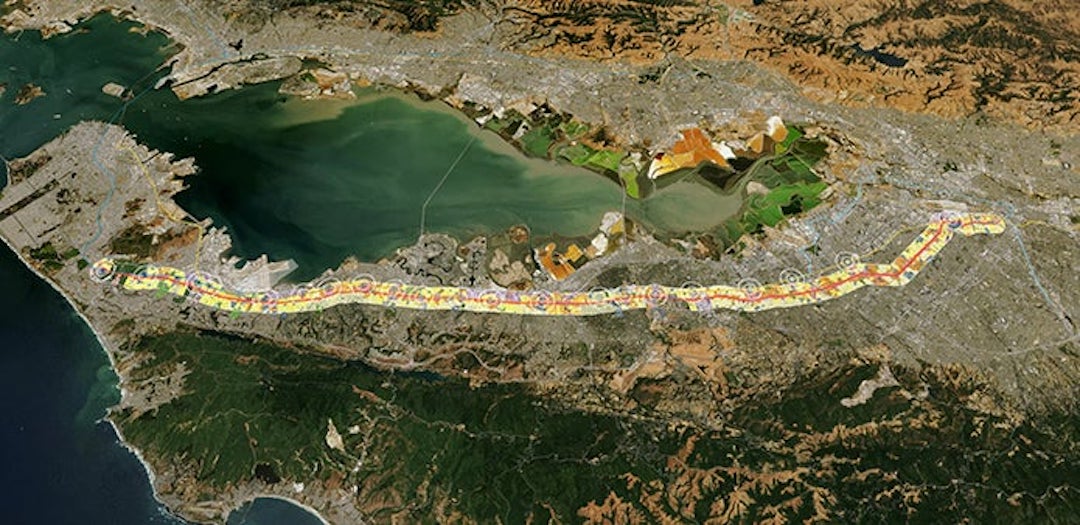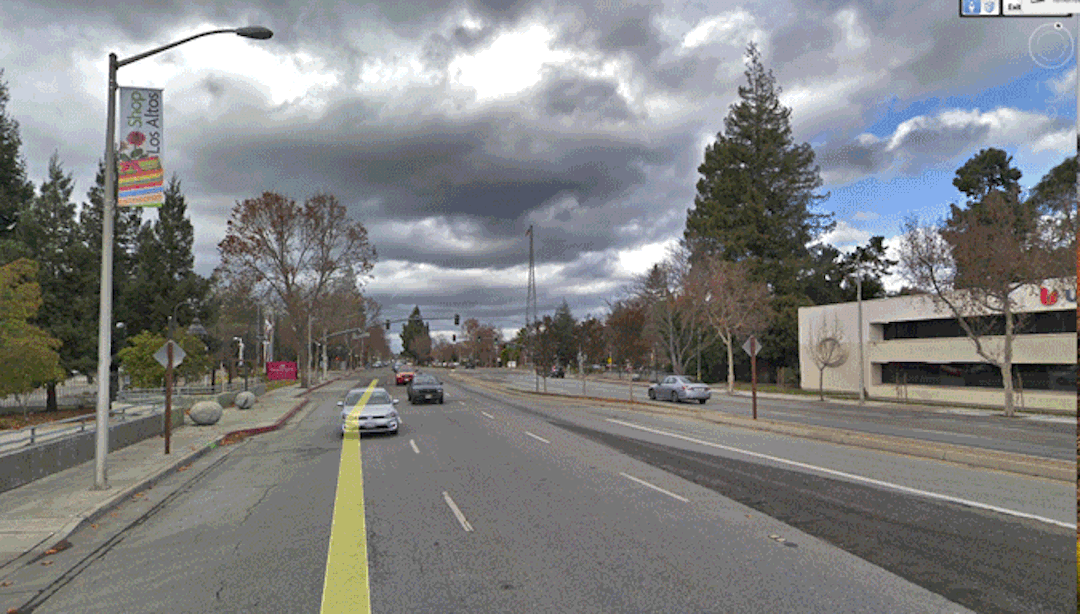The great American shopping strip mall is a relic. It was once the glue holding together the American dream world of subdivisions, shopping centers, and suburban office parks. Lined with landmarks and trademarks, it was a new type of social space, the place to cruise and even gather.
But as more of our lives have gone online and purchasing behaviors have shifted to shopping from the comfort of your home, much of the brick-and-mortar commercial life of the shopping strip is in decay.

A typical vacant shopping strip mall.
Simultaneously, the West Coast is suffering from a massive housing crisis: a shortage of new construction, exploding costs, and very little choice. California is the poster child of the problem with a housing shortage of two million units as well as projected demand of 1.5 million for the next decade. Jobs continue to grow while housing and transportation fall behind. For example, within the last decade the Bay Area of California saw 800,000 jobs created while only 114,000 houses were built to house the people filling those positions. Congestion levels continue to mount as most affordable housing slips farther and farther from the job centers in Silicon Valley and San Francisco. Worst of all, housing is only affordable to 50% of the population.
The days of spreading ever outward to suburbs that are too distant from jobs and too expensive for many struggling working-class households are unsustainable. We know the only rational direction is inward: infilling, repairing, and enhancing our existing communities — and accelerating the shift from cars to walking, biking and transit.
But how and where? Several housing strategies are being debated and a large patchwork of infill activity is ongoing — but none are moving at the scale or pace needed. Building multifamily housing around transit stations is a popular idea that makes sense. Unfortunately, many communities reject new density in residential areas regardless of access and don’t support expensive new transit lines. Those lucky enough to have a spot in a mature community too often oppose development of any kind, hanging onto a status quo that works for them but not the next generation.
One solution offered is California’s SB9 — state legislation to up-zone residential on single family lots to four- and six-unit buildings. While allowing multifamily development into single family neighborhoods may be noble and equitable, it also brings forth opposition and concerns about displacement and gentrification. And while addressing housing, SB9 does little to expand the region’s inadequate transit network or affordable needs. So, this well-intentioned infill law needs to be supplemented with other more balanced strategies.
An additional approach is to redevelop underutilized strip malls into multi-functional Grand Boulevards. A recent study by HDR and UrbanFootprint, an urban intelligence software platform, found that the underutilized commercial land lining the Inner Bay Area’s 700 miles of arterial roads totaled staggering 15,400 acres. If redeveloped, this land could potentially provide nearly 1.37 million new houses that are close to jobs and existing services — most of it right in Silicon Valley. Housing would vary in density and height by location and would include inclusionary requirements and tax increment financing for 30% affordable units.

The El Camino strip runs 43 miles through Silicon Valley and could provide 250,000 units of new housing without displacing any existing homes or apartments. (Source: Google Earth)
While not invading stable residential areas or tearing down affordable apartment buildings, this commercial land could be rebuilt with mixed-use structures, keeping retail businesses on the ground floor while adding condos and apartments above. In other words, massive infill, but not as politically toxic as residential demolition or new densities in old neighborhoods.
On these ‘Grand Boulevards,’ the next generation of transit could emerge. Buses could be added on exclusive transit lanes (bus rapid transit), with the potential to someday be replaced with autonomous vans that use smart algorithms to cluster origins and destinations, providing on-call express trips 24/7. Faster and less expensive to build and operate than any current transit system, autonomous rapid transit is currently being tested in Singapore. Fehr & Peers, a leading transportation firm, estimates the construction cost at 15% of most light rail systems, with half the operating cost, all while moving passengers 30% faster. Fast, cheap, and ubiquitous might just the ticket to get people out of their cars.

Before and after: From auto-only arterials to a boulevard for pedestrians, bikes, and transit in the same space.
The infill housing strategy would upgrade the dying strip while distributing housing throughout the region without disrupting stable neighborhoods. And as a bonus, the increased property values would provide a tax windfall for state school funding as well as public investments in transit, parks, affordable housing, and local public services. Preliminary estimates show a $14 billion annual tax increment and counties that could underwrite $34 billion of bonds. Combining a 15% inclusionary requirement with bonds of $10 billion for an affordable housing fund produces up to 340,000 below market units. After allocating another $7 billion for transit and $3 billion for parks, this leaves over $14 billion for funding improvements to other infrastructure and local services.
And here’s more: When compared to the environmental and economic impacts of an average Bay Area house, these units would generate 55% fewer auto miles, cost 53% less in utilities and transportation, consume 39% less energy, and demand 62% less water. What we’re creating are places to live that are more affordable to the environment, to households, and to our cities.
The strip mall represents underutilized and undervalued real estate as well as an opportunity to solve our most critical housing and transportation crisis. At the same time tax increment financing can help pave the way for more affordable housing, mobility improvements, expanded parks, and local services. With the Grand Boulevards strategy, we can transform our ‘greyfield’ corridors into thriving, living assets that enhance existing communities while solving the housing crisis.






